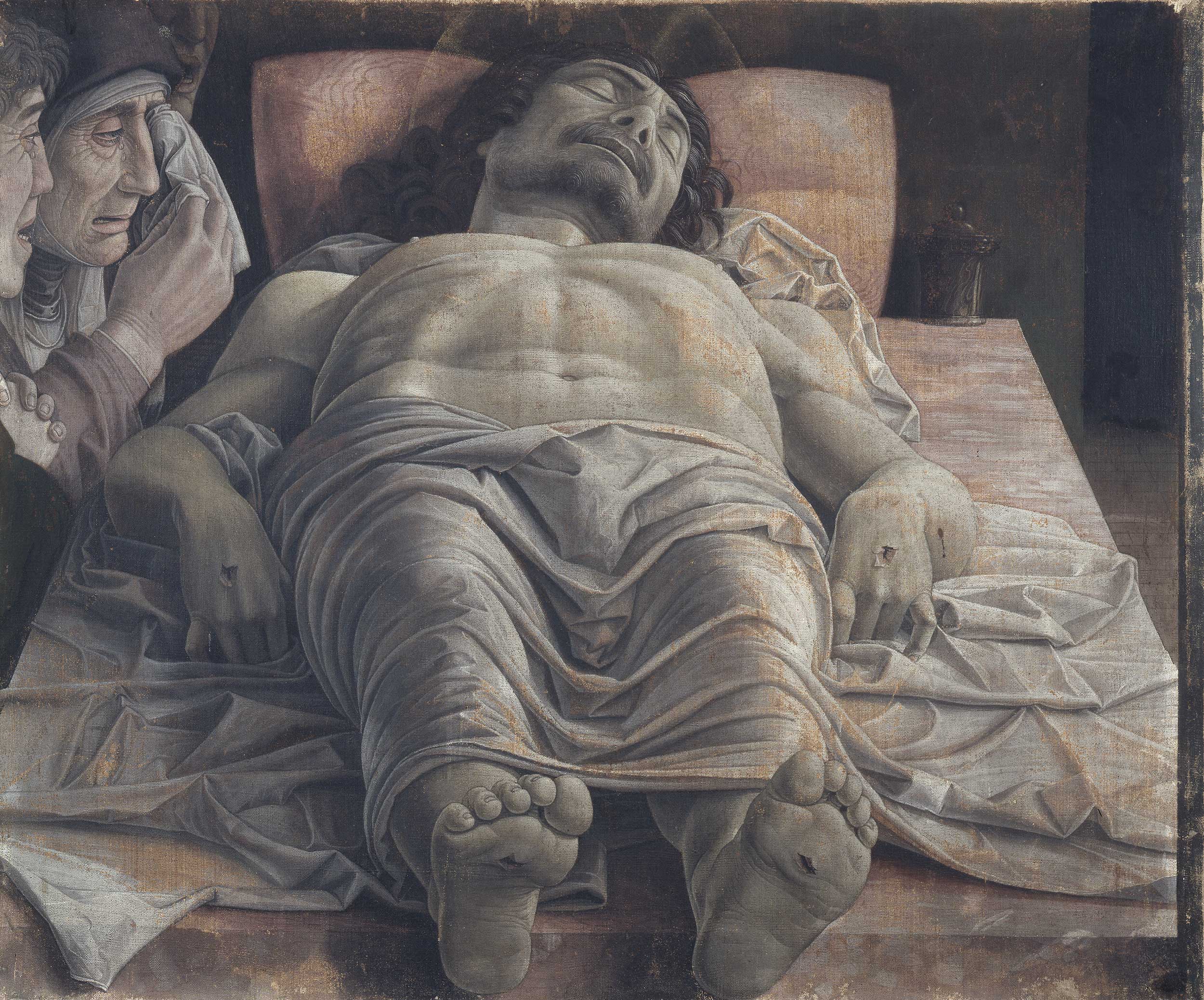Today for the Western Christian world it is Holy Saturday. The day commemorates the Harrowing of Hell while Jesus Christ's body lay in the tomb. On this occasion we feature one of the most stunning masterpieces of the Italian Renaissance, this breathtaking painting by Andrea Mantegna.
The most convincing hypothesis, despite the uncertainties stemming from the existence of several variants of the same subject, identifies the painting in Brera with the “foreshortened Christ” found in Mantegna’s studio at the time of his death, sold by his son Ludovico to Cardinal Sigismondo Gonzaga and inventoried among the property of the lords of Mantua in 1627.
The iconography of the work, probably intended for the artist’s private devotion, refers to the compositional scheme of the Lamentation over the Dead Christ, in which mourners are gathered around the body prepared for burial, laid out on the stone of unction and already anointed with perfumes.
The composition produces a great emotional impact, accentuated by the extreme foreshortening: Christ’s body is very close to the viewpoint of the observer who, looking at it, is drawn into the center of the drama; moreover, every detail is enhanced by the incisiveness of the lines, which compels the gaze to linger over the most terrible details, over the members stiffened in rigor mortis as well as the wounds, ostentatiously presented in the foreground as called for by the tradition of this type of image. It is an absolute peak in Mantegna’s production, a work whose expressive force, severe composure, and masterly handling of the illusion of perspective have made it one of the best-known symbols of the Italian Renaissance.
We present today's work thanks to the Pinacoteca di Brera.
P.S. Check here our brief guide of Italian Renaissance – an absolute must-know for every art lover <3
P.P.S. Yesterday was World Art Day, but we're not over celebrations - our DailyArt Courses are now 25% off!


 Andrea Mantegna
Andrea Mantegna